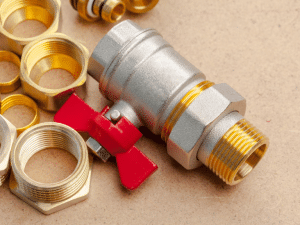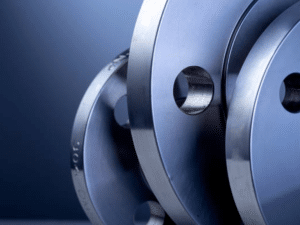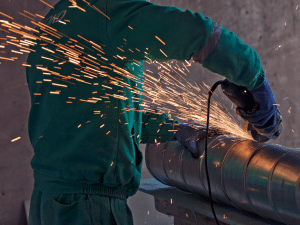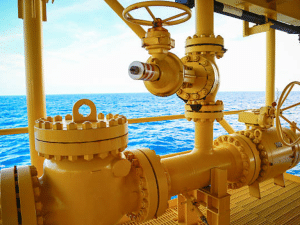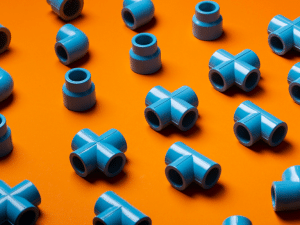Common Types of Butt Weld Fittings and Where to Source Them
The oil and gas industry is going through a noteworthy change due to modern technologies and new methods of production. The industry faces a steady increase in demand for safety, efficiency and durability. It also increases the requirements on the high-quality pipeline components. One of the enormous pieces that functions in this industry is the flange, and innovation in this area is changing pipeline infrastructure maintenance.
The integration of Precision engineering, Automation, and Smart monitoring of modern flange manufacturing results in high performance and increased service lifespan of these vital components. Let’s explore innovative impact on butt weld fittings particularly in areas serviced by reliable Bothwell fittings suppliers in the UAE.
What Are Butt Weld Fittings?
The butt weld fitting are type of pipe fitting that is applied where the fittings to pipes are welded at both ends to allow for change in direction, branching and alteration of size. It is most suitable in high-pressure environments as a smooth connection adds strength.
These fittings are extensively employed in applications demanding high strength and prevention of leakage. When welded, the piping joint becomes a permanent feature of the system, improving the efficiency of flow and lessening turbulence.
Key Benefits of Using Butt Weld Fittings
- Pressured, Enduring, and Leak-Proof Connections: The connection is reliable because of the added strength of fusion.
- Seamless Flow: The use of butt weld fittings helps eliminate pressure drop and fluid stack-up.
- Long-Term Economical: The longevity of butt weld fittings reduces the need for maintenance over time.
- Without Restrictions: These butt weld fittings can be used for any angle and also branched off.
- Versatile Material Usage: Comes in the form of carbon steel, alloyed stainless steel, and many other alloys.
Due to these reasons, butt weld fittings suppliers are an industry go-to as butt weld fittings provide the wieldable edge needed in critical oil and gas settings along with other industries.
Common Types of Butt Weld Fittings
As part of a piping system, butt weld fittings come in several types designed to fit each need.
Elbows
These welds change the direction of flow in a wire. Available at 45-degree and 90-degree angles, elbows are critical for enabling piping systems to efficiently change direction and weave through a multitude of pathways.
Tee
A fitting used to divide flow of a fluid into two directions is known as a Tee. Used in pipelines where branching is needed, these fittings are important to both collection and distribution processes in refineries and processing plants.
Reducers
These type of welds changes the size of pipes in a smooth manner, as they can be shifted from concentric to eccentric alignment where a change in diameter is present. This fitting controls lowering pressure and decreasing speed.
Caps
A gap in a pipe is sealed with a cap. These fittings are mostly used for maintenance purposes or at the end of a pipeline system, thus ceasing the entire flow.
Stub Ends
Caps are used with lap joint flanges that multi-purpose for easy dismantle during maintenance. They are used more often in systems where a lot of disassembly is required or rotating flanges is needed.
Materials Used in Butt Weld Fittings
The performance of butt weld fittings highly depends on material selection. Some of the more commonly used fitting materials include:
- Carbon Steel: Widely used for its strong and lasting traits.
- Stainless Steel: Particularly useful for its great ability to resist rust, especially in ocean and chemical settings.
- Alloy Steel: Appropriate for use in high-temperature and high-pressure conditions.
- Duplex and Super Duplex Steel: This has the ability to produce much better resistance to cracking due to stress corrosion.
Always verify quality certifications and compatibility with your system’s specifications from both local and international butt weld fittings vendors.
Applications Across Different Industries
Moreover, butt weld fittings are important in the oil and gas sector; they are also used in:
- Petrochemical and chemical Plants
- Food and Beverage Manufacturing
- Power Generation Facilities
- Shipbuilding and Marine Industries
- Water Treatment Plants
The best suppliers of Bothwell fittings in the UAE serve multiple sectors as they spend money on equipment that passes worldwide quality checks.
How to Choose the Right Butt Weld Fittings
Consider the following to select butt weld fittings:
- Fitting Material Specifications
- Pipe Diameter and Schedule
- Operating Pressure and Temperature
- Type of Fluid or Gas in Use
- Pipe Material Compatibility
- Standards and Certifications (ANSI, ASME, etc.)
- Supplier Reputation and After-Sales Support
Choosing from reputable butt weld fittings suppliers ensure premised specifications alongside enduring efficiency by providing proper guidance.
Where to Source Quality Butt Weld Fittings
Bothwell fittings suppliers in the UAE provide off-the-shelf butt weld fittings. These are tailor-made, tested, and certified for rugged settings such as offshore and onshore applications, guaranteeing compliant quality.
Some suggestions for how to tell a reliable supplier include the following:
- Looking for documentation and traceability of a certain product
- Finding out whether the supplier allows for customization
- Assessing the availability of stock and the lead time for delivery
- Reading customer feedback and case studies
Consider JSS Pipes, which offers a broad selection of fittings and flanges specifically designed for oil and gas projects.
Conclusion
The oil and gas industry is very aggressive, and having the right components is a must. Innovations in the manufacturing of flanges and the provision of high-quality butt weld fittings make it easier for companies where safety, efficiency, and durability are needed. If you are renewing your old systems or starting new infrastructure, make sure that the materials are sourced from reputable bothwell fittings suppliers in the UAE; this will make a huge difference.
Frequently Asked Questions
What is the difference between seamless and welded butt weld fittings?
Seamless butt weld fittings are stronger as they are made from solid steel billets without a welded seam, thus better suited for high-pressure applications. Welded ones are made by rolling and welding steel plates or coils, making them more economical for less critical uses.
Are there industry standards for butt weld fittings?
Common standards include ASME B16.9, ANSI B16.28, and MSS-SP 43, which set the rules for the dimensions, tolerances, and pressure ratings.
How do I know which type of fitting is best for my project?
Reach out to engineers or reputable butt weld fittings suppliers who pay attention to your pressure, temperature, and other factors relevant to your environment.
Can butt weld fittings be used in high-pressure systems?
Yes, they are. Seamless butt weld fittings are particularly suited for high-pressure applications like those found in refineries and offshore drilling rigs.
Where can I get dependable suppliers of butt weld fittings?
Look for accredited butt weld fittings suppliers based in the UAE, as they offer certified and rugged products appropriate for various industrial applications.


